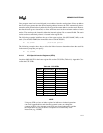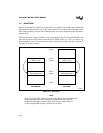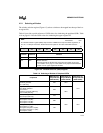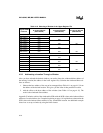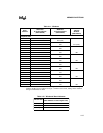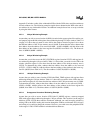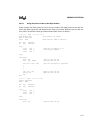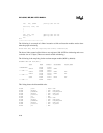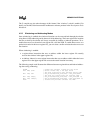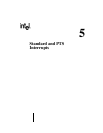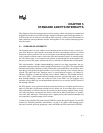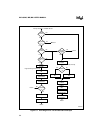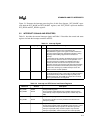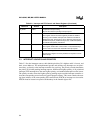
4-19
MEMORY PARTITIONS
The C compiler can also take advantage of this feature if the “windows” switch is enabled. For
details, see the MCS 96 microcontroller architecture software products in the Development Tools
Handbook.
4.2.3 Windowing and Addressing Modes
Once windowing is enabled, the windowed locations can be accessed both through the window
using direct (8-bit) addressing and by the usual 16-bit addressing. The lower register file locations
that are covered by the window are always accessible by indirect or indexed operations. To re-
enable direct access to the entire lower register file, clear the WSR. To enable direct access to a
particular location in the lower register file, you can select a smaller window that does not cover
that location.
When windowing is enabled:
• a register-direct instruction that uses an address within the lower register file actually
accesses the window in the upper register file;
• an indirect, indexed, or zero-register instruction that uses an address within either the lower
register file or the upper register file accesses the actual location in memory.
The following sample code illustrates the difference between register-direct and indexed address-
ing when using windowing.
PUSHA ; pushes the contents of WSR onto the stack
LDB WSR, #12H ; select window 12H, a 128-byte block
; The next instruction uses register-direct addr
ADD 40H, 80H ; mem_word(40H)←mem_word(40H) + mem_word(380H)
; The next two instructions use indirect addr
ADD 40H, 80H[0] ; mem_word(40H)←mem_word(40H) + mem_word(80H +0)
ADD 40H, 380H[0] ; mem_word(40H)←mem_word(40H) + mem_word(380H +0)
POPA ; reloads the previous contents into WSR



